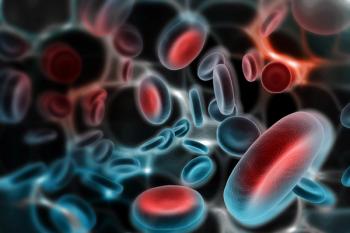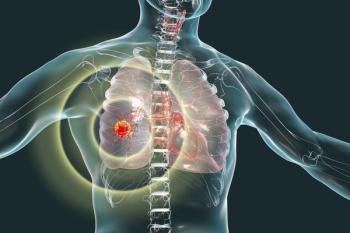
- ONCOLOGY Vol 14 No 7
- Volume 14
- Issue 7
Catalog of Human Cancer Genes: McKusick’s Mendelian Inheritance in Man for Clinical and Research Oncologists (Onco-MIM)
The author of this reference, Dr. John J. Mulvihill, has a long-standing reputation for studying the complexities of human genetic disorders. His experiences, many publications, and collaborations have focused on various topics, including definition of the
The author of this reference, Dr. John J. Mulvihill, has a long-standing reputation for studying the complexities of human genetic disorders. His experiences, many publications, and collaborations have focused on various topics, including definition of the spectrum of malignancies in genetic syndromes; the familial aggregation of cancer; gene mapping; genetic disease in the offspring of long-term survivors of childhood/adolescent cancers; and the application of these findings to disease management and public health improvement.
It is no surprise, then, that Dr. Mulvihill has complimented his colleague, Dr. Victor A. McKusick, by publishing a compilation of genetic syndromes associated with neoplasia or a cancer gene or protein from McKusicks online version of his book entitled Mendelian Inheritance in Man (MIM). This is not an easy feat as we enter the 21st century, considering the discovery of and achievements in human genetics that have taken place during the last 3 decades, as well as the technologic advances in cancer genetics that have occurred within the last 10 years.
The book organizes all currently identified cancer genetic syndromes into 11 chapters, with the first 10 chapters cataloging body organ systems, such as the nervous, endocrine, integumentary and alimentary systems. The various major tumors of each organ system are then listed, followed by the specific genetic syndrome and a unique six-digit MIM number.
As in McKusicks Mendelian Inheritance in Man, Dr. Mulvihills text describes the syndromes in summary form, including (when possible) clinical and biochemical features, mode of inheritance, cytogenetics and molecular genetics, history, and animal models described for that particular disorder. Entries focusing on rarer syndromes are brief, whereas those on more common genes, such as the BRCA1 gene (MIM #113705), continue for many pages.
The knowledge base for MIM has been pooled from peer-reviewed journals. The layout of the 11th chapter is similar to the first 10 chapters, but is assembled to list oncogenes and proto-oncogenes, tumor-suppressor genes, translocation breakpoints, fusion proteins, and other markers, proteins, and genes that have not yet been associated with a particular cancer genetic syndrome, and yet are representative of somatic mutations observed in certain cancers.
The type and style of each entry are reminiscent of McKusicks edition, with references cited after each entry. In his typical style, Dr. Mulvihill has also taken the extra step of adding fresh touches to his collection of entries from the original text, such as creatively preceding each entry with a JJM note. Depending on the entry, the note is either a small summary of or a personal insight into the disorder. For example, one JJM note for a particular entry reads: Follow-up of these three kindreds could be illuminating, especially if thorough clinical and molecular characterization could be done. This small sentence is a true reflection of the vision of Dr. Mulvihill and many cancer geneticists, who suggest following these types of clinical associations and phenotypes with genotype information in future MIM entries.
Readers will come to respect this book as a collection of summaries and references on cancer genetic syndromes, their genes, and other genes. Limitations include a lack of graphs and charts to illustrate empiric and relative risks of cancer for at-risk individuals. There are also no illustrations or pictures to provide the clinician with an idea of some of the rare findings associated with certain uncommon syndromes. For example, trichilemmomas in Cowden multiple hamartoma syndrome (MIM #158350), sebaceous skin tumors in Muir-Torre syndrome (MIM #158320), and gingival fibromatosis with distinctive facies (MIM #228560). Finally, the reader will find no resources in this book to locate laboratories that provide research or diagnostic genetic testing or counseling services for a particular condition.
Access to these syndromes and their genes is also available through the online version of MIM (OMIM at
As we continue to understand the evolving field of human cancer genetics, this book, as a first publication, has the potential to inspire oncologists and geneticists to add to this catalog. It is recommended to anyone in the field of cancer genetics, and, just like McKusicks Mendelian Inheritance in Man, this hard-copy format will benefit those who oversee and maintain busy familial cancer risk programs and cancer registries.
Articles in this issue
over 25 years ago
Non–Small-Cell Lung Cancer Single-Agent Therapyover 25 years ago
Linezolid-A New Option for Treating Gram-Positive Infectionsover 25 years ago
Current Issues in the Treatment of Resistant Bloodstream Infectionsover 25 years ago
Changing Patterns of Infections and Antimicrobial Susceptibilitiesover 25 years ago
Ambulatory Antimicrobial Therapy for Hematologic Malignanciesover 25 years ago
Questions and Answers: Non–Small-Cell Lung Cancerover 25 years ago
Questions and Answers: Small-Cell Lung Cancerover 25 years ago
Irinotecan in Small-Cell Lung Cancer-Japanese TrialsNewsletter
Stay up to date on recent advances in the multidisciplinary approach to cancer.


















































































